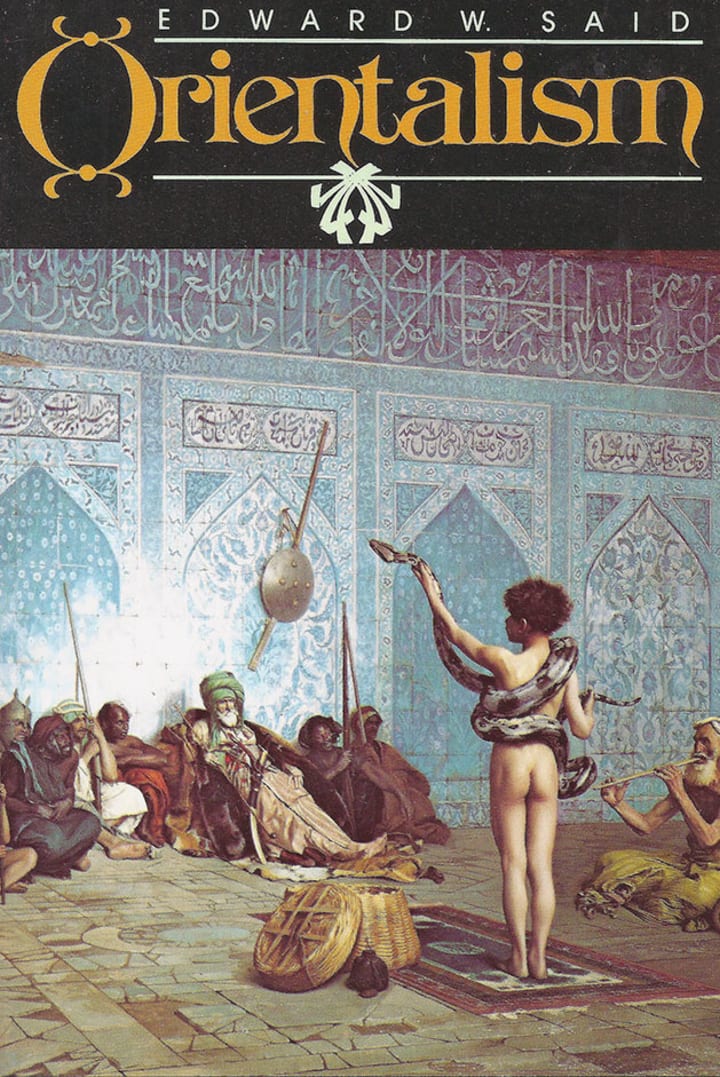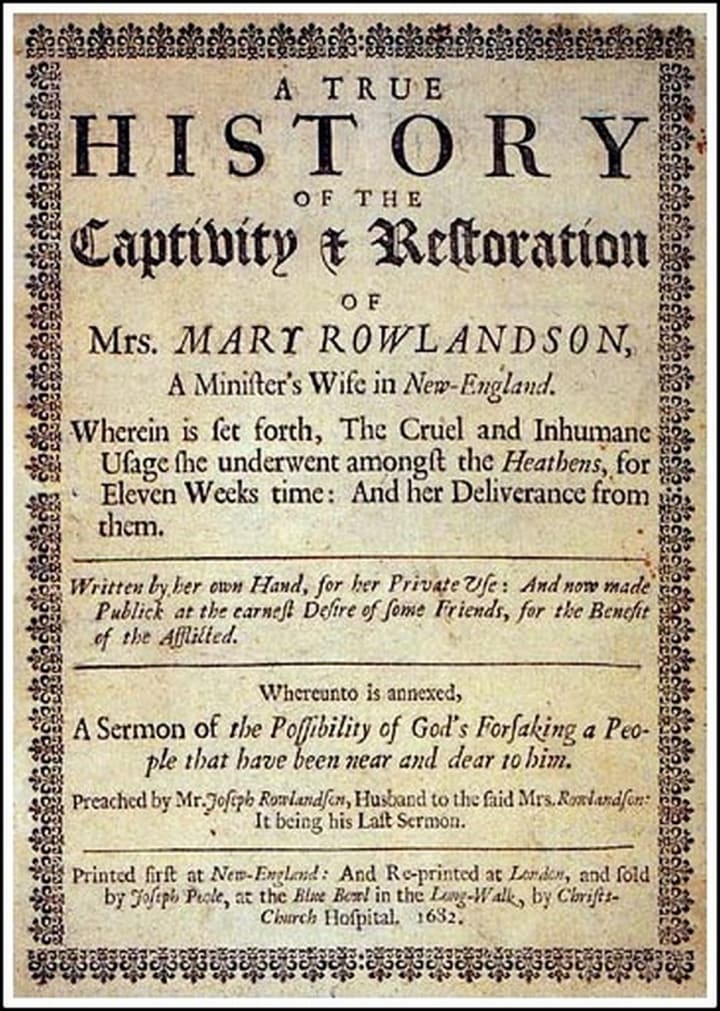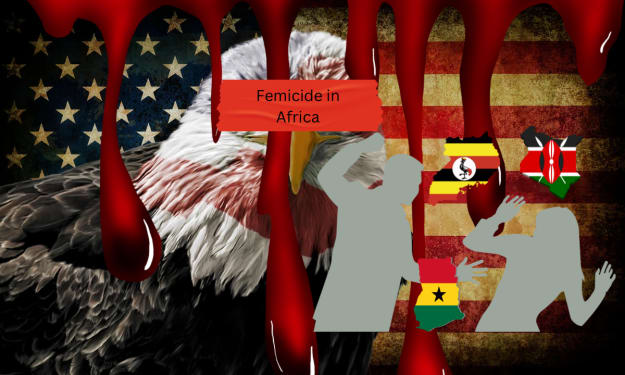Orientalism & the American Native
The Historical Flaw with Outsiders looking Inward.

The term “orientalism” has been made popular and a primary key concept of historiographic bias by the Palestinian historian and activist Edward Said, with the publishing of his book Orientalism in 1978. The concept of orientalism is that throughout the course of the 19th and early 20th Centuries, numerous cultures which existed outside of continental Europe were studied by European academics to understand the elements which made them culturally opposite to that of their native customs in England, France, Spain, Italy, and Germany. In the areas that are known today as the Middle East (then dominated by, mostly, the Ottoman Empire, India, Iran, and Egypt). However in the process of attempting to gain an understanding to each separate society’s traditions, and distinctions, many learned scholars and artists began to create a sense that in order for their fellow societies in Europe to understand this "world beyond their own" easier and faster, their scholarly findings and artistic renderings were condensed into cultural normalities which blurred the dichotomies between norms which are specifically Ottoman and those which are specifically Egyptian, Iranian, or Indian. The concept that these nations and their cultural normalities are all the same except for differences in geographic borders between the nations and empires. That the modern world now associates with stereotyping and cultural appropriation, Edward Said labeled as orientalism.

In a quite constant way, Orientalism depends for its strategy on this flexible positional superiority, which puts the Westerner in a whole series of possible relationships with the Orient without ever losing him the relative upper hand. And why should it have been otherwise, especially during the period of extraordinary European ascendancy from the late Renaissance to the present? The scientist, the scholar, the missionary, the trader, or the soldier was in, or thought about, the Orient because he could be there, or could think about it, with very little resistance on the Orient’s part. (Said, 90)
In the case of the earliest chapters of American history, one can establish the argument that Said’s theory can apply to colonial captivitiy narratives; with the most famous of these being A Narrative of the Captivity and Restoration of Mrs. Mary Rowlandson. Published in 1682, the story chronicles the autobiographical story of Mary Rowlandson, whose family and village of residence in Puritan Massachusetts was attacked by the native Wampanoag tribe, under the leadership of Chief Metacomet (also known by the English name, King Philip). She is taken prisoner by a Wampanoag raiding party and taken back to their village in the backwoods of New England. While in bondage, Mary and her surviving children abducted alongside her, live about a period of 12 months on the Wampanoag’s warpath, evading British rescue parties and carrying out other raids. Eventually her captors offer a ransom to have Mary returned to her fellow Puritans. In her narrative, she recounts her memories as a prisoner of war by the Wampanoags with vivid and visceral detail, however, the authenticity of such accounts and the perspective of the real events transpired at the time is questionable to say the least.



At the time of Rowlandson’s publishing of her captivity narrative, the infamous Puritan minister Cotton Mather obtained the rights to her story and used the narrative as a means to justify his preachings of how the native tribes were all heathens and godless savages; and that while Mary and her children were held in the aboriginal’s custody, she was able to persevere headstrong and return to her proper community with a standing faith; which remained almost unaltered in belief since her abduction. This is where Said’s Orientalism theory comes into effect. Mather’s preaching and possible reinterpretation of Rowlandson’s narrative becomes the source for marginalizing First Nations culture as a unitary entity and not a complex network of differing tribal nations with differing standards of living and religious faiths. Instead, they become the noble and relentless savage; a primitive entity which was fueled by the primitive instinct of self preservation. A concept which certainly lasted beyond the era of the Puritans and lingers on in the modern day; from major league sports mascots to Hollywood.
All of which leads to the contextualization of how Said’s theory of Orientalism and it’s pre-theoretical implications with the captivity narrative of Mary Rowlandson shows how the modern generations of historians and anthropologists must rely on primary sources of past information from all perspectives in order to create a full understanding of the past. To conduct the historiography of the past merely from the voices of the victors renders only a slanted perspective of the defeated and the cultural standards which defined them at specific points of time. A practice that is no different than washing one’s body, but only the parts that can be seen in public, and not covered by clothing. Only through the careful analysis of the narratives told in instances of international encounters and communication from all sides will the truth of the past be made clear and be exposed in the light of the world’s knowledge.
Works Cited
- Said, Edward. Orientalism. Vintage Books. 1978. Print. Accessed September 6, 2020.
- Rowlandson, Mary. Narrative of the Captivity and Restoration of Mrs. Mary Rowlandson. Carter, Andrews, and Company. 1828. Print. Accessed September 6, 2020.
- Orientalism. YouTube, uploaded by Musée d’Orsay, 3 Oct. 2019, www.youtube.com/watch?v=WqneW9V45Pg. Web. Accessed September 6, 2020.
- Native Americans Review ‘Indian’ Sports Mascots. YouTube, uploaded by As/Is, 25 Sept. 2015, www.youtube.com/watch?v=HTBT-_F6oYw. Web. Accessed September 6, 2020.
- Indigenous People React To Indigenous Representation In Film And TV (Pocahontas, The Lone Ranger). YouTube, uploaded by FBE, 14 Oct. 2019, www.youtube.com/watch?v=7ZkyL5pn74E. Web. Accessed September 6, 2020.
About the Creator
Jacob Herr
Born & raised in the American heartland, Jacob Herr graduated from Butler University with a dual degree in theatre & history. He is a rough, tumble, and humble artist, known to write about a little bit of everything.






Comments
There are no comments for this story
Be the first to respond and start the conversation.